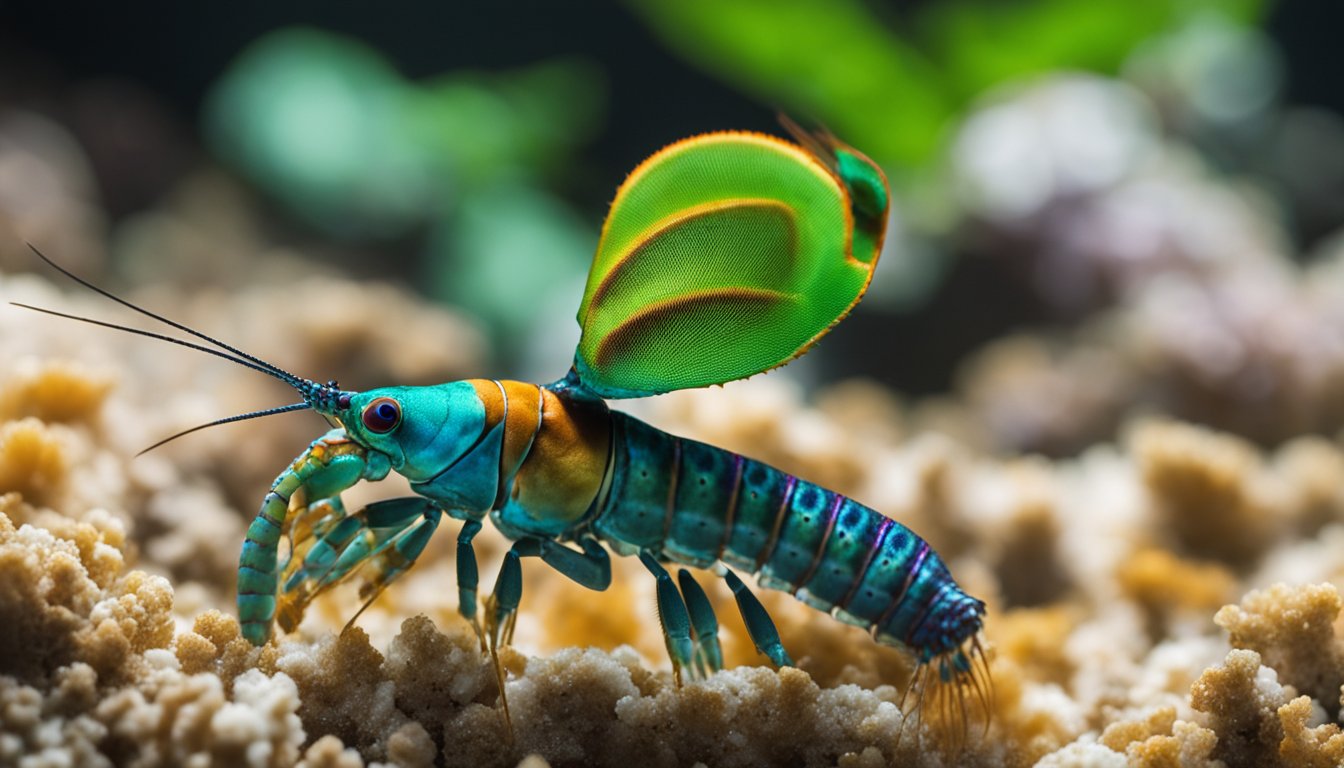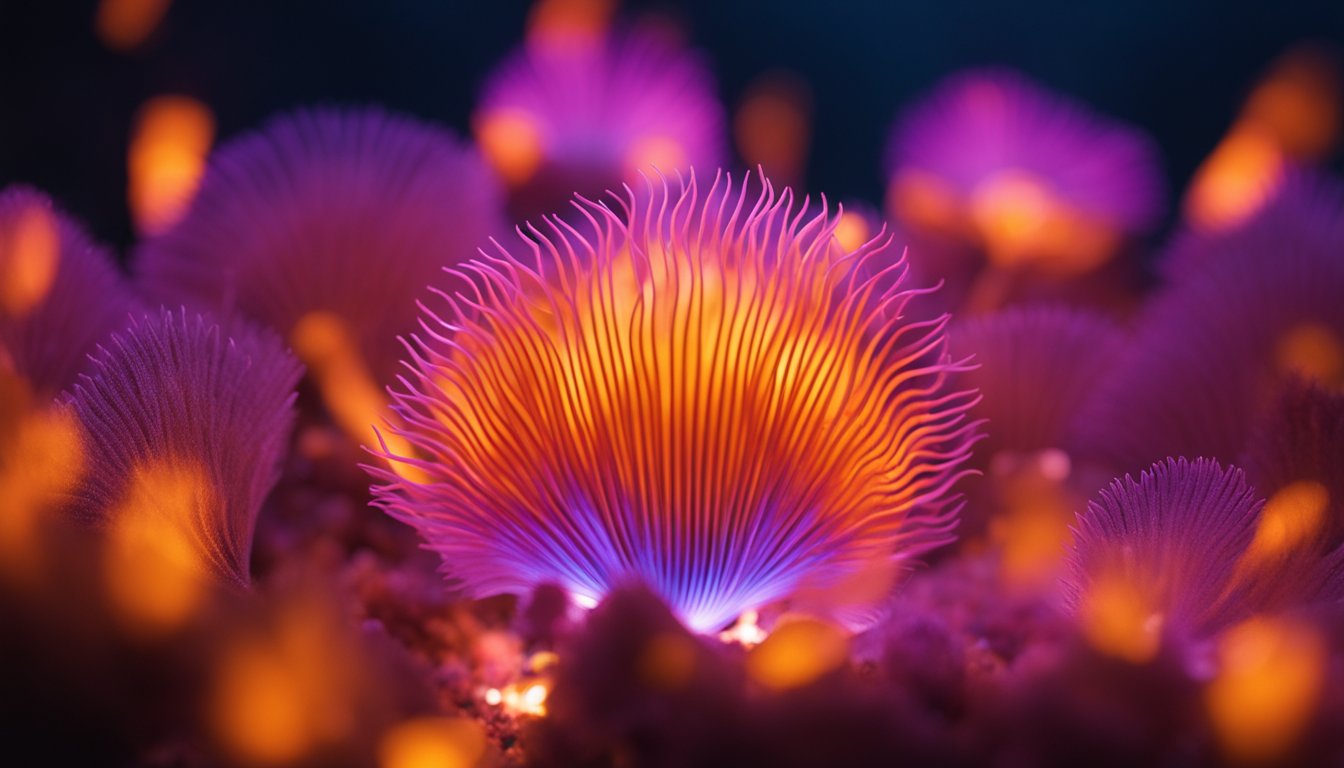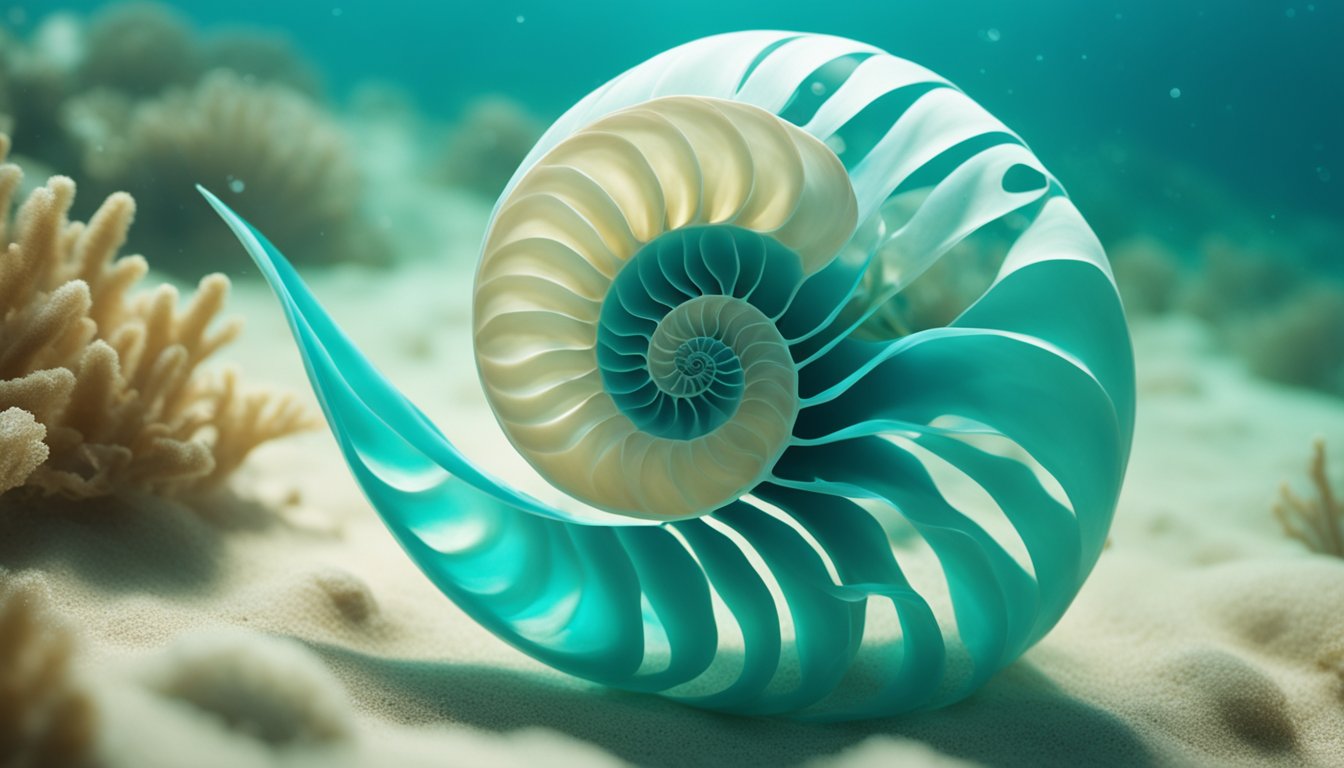Have you ever wondered what it would be like to discover a treasure chest filled with gems of every color?
Well, imagine that, but alive and adorning the ocean’s floor. These treasures are called nudibranchs, some of the most colorful creatures in the sea.
We often call them the “rainbow slugs of the ocean” because they come in all sorts of shimmering colors and patterns.
Unlike the garden slugs we might find in our backyards, nudibranchs wear their bright colors like fancy dresses at a ball.

Nudibranchs are a fascinating group of sea slugs that belong to a larger family known as mollusks, which includes snails and clams.
However, what makes our squishy friends stand out is their lack of a shell to call home.
Instead, they roam the seas showing off their vibrant bodies – some dressed in neon yellows and pinks, while others sport dashing purples and blues.
There are more than 3,000 known species of nudibranchs, and we’re always finding new ones.
Each one is unique, like a snowflake, with its own special pattern.
These sea slugs are not just about looks; they have some pretty cool features too.
For example, some nudibranchs can eat poisonous creatures and store their toxins for their own defense, making them too yucky to eat for most predators.
Others can absorb the stinging cells from jellyfish and use them as their own little protective army.
So, while they might seem like just a pretty face, nudibranchs are tough survivors in our vast ocean. How cool is that for a sea slug?
Dazzling Diversity

When we explore the ocean’s depths, it’s as if we’ve entered a hidden gallery of living art.
The nudibranchs are like masterpieces, showcasing a brilliant array of designs that are as varied as they are vibrant.
Colors and Patterns
Our little rainbow friends, the nudibranchs, come dressed to impress with an astonishing wardrobe of colors and patterns.
Have you ever wondered how they get their fancy outfits?
These colors can be vivid reds, electric blues, or even neon yellows and greens.
Imagine a patterned carpet moving slowly across the ocean floor – that’s sort of what a nudibranch looks like with its waves of spots, stripes, and swirls!
The patterns aren’t just for show; they often help nudibranchs blend in or warn predators that they are not tasty snacks.
Species Variety
Now, let’s dive into the many different types of nudibranchs we can find. With more than 3,000 species, there’s always something new to discover.
We have the Blue Dragon, which sounds like a creature from a fairy tale but is totally real.
Or the adorable Sea Bunny, which can fit right in the palm of our hand. Each species has its own special features.
Some like to munch on corals, while others have a taste for sponges.
What’s really cool is that some even borrow weapons from their prey, using the stinging cells for their own defense!
Isn’t the ocean just full of surprises?
Habitat and Distribution

Nudibranchs are amazing creatures that live in the ocean, and our journey to explore their homes is just as colorful as they are.
We’ll find out where in the world these dazzling slugs spend their days and what kind of watery neighborhoods they prefer.
Ocean Realms
It’s fascinating how nudibranchs make their homes in practically every corner of the ocean, from shallow tide pools to deep sea floors!
When we say they love to stay by the ocean’s surface, we mean they enjoy the sunlit zone down to 200 meters deep, where sunlight still dances through the water.
But some of our bold nudibranch friends venture far below, into the twilight zone up to 1,000 meters deep, and a few even to the dark, mysterious abyss beyond that.
Global Locales
If we were to travel the world, we’d find nudibranchs nearly everywhere, from the balmy tropics to the chilly polar seas.
Locations like the vibrant coral reefs of Australia or the striking cold waters off the coast of Norway boast some of the most incredible varieties.
These ocean beauties don’t just stick to one place—they’re found in different environments across the globe.
For instance, the rich, productive waters of the Indo-Pacific region are known as a hot spot for these colorful critters, and over there, they’re as common as finding shells on a beach.
Anatomy and Physiology

Nudibranchs are fascinating creatures with unique physical features that allow them to thrive in the marine environment.
Their anatomy is complex and they possess intriguing feeding and defensive mechanisms which we will explore.
Body Structure
When we look at the body structure of a nudibranch, we see a soft-bodied, shell-less marine creature, quite different from its snail cousins.
They range in size from a tiny speck to about a foot long, but most are quite small, often just a few inches.
Imagine a creature as long as your favorite pencil!
They exhibit an array of colors and patterns, some so bright and vibrant, they remind us of a living rainbow.
Their bodies are elongated with tentacles on their heads called rhinophores which they use like a built-in GPS to smell and navigate their aquatic world.
Feeding Mechanisms
Speaking of meals, nudibranchs have quite the appetite.
They use a radula, much like a tiny, ribbon-like tongue with rows of tiny teeth, to grate their food, which includes sponges, corals, and even other sea slugs.
Some nudibranchs are pretty picky eaters, dining on only one type of food, while others will munch on a variety.
Imagine if we could only eat one kind of food for our whole life!
Defensive Strategies
When it comes to defending themselves, nudibranchs are truly creative.
Without a hard shell for protection, they’ve developed other ways to avoid becoming a snack for predators.
Some nudibranchs possess stinging cells or toxins from their prey, which they cleverly incorporate into their own bodies.
Others can even produce their own chemicals which can taste quite awful to anyone trying to eat them.
It’s like they wear a coat made of “Keep Away” signs.
Plus, their brilliant colors aren’t just for show; they’re a warning sign that says, “I’m not tasty!” to potential predators.
Life Cycle and Behavior

Nudibranchs have fascinating life cycles that show us just how wonderful the natural world is.
From the way they find their mates to how they grow, let’s dive into their world and see what makes them tick!
Mating Rituals
We see that nudibranchs have a unique way of finding their partners. Being hermaphrodites, each individual slug has both male and female reproductive organs.
When it’s time to mate, they engage in a dance-like ritual where they line up their bodies to transfer sperm to each other.
This means both slugs get to lay eggs later, which is pretty smart if you think about it!
After the exchange, they part ways; their job in the cycle of life is done for now.
Growth Stages
As for growing up, our little slug friends go through quite the transformation.
They start their journey as tiny eggs laid in delicate ribbons or masses that are often as colorful as the adults.
These eggs hatch into free-swimming larvae called veligers.
In this stage, nudibranchs drift in the ocean currents, which can be thought of as the ocean’s way of giving these little ones a grand tour of their new watery home.
The veligers eventually settle on the ocean floor and undergo metamorphosis, transforming from the larval stage into juvenile nudibranchs.
As they grow, they shed their outer layer several times in a process called molting.
Each time they do this, they’re one step closer to becoming the vibrant, colorful adults we’re so amazed by!
It can take several months for them to reach full maturity, and their lifespan typically ranges between a few weeks to a year, which reminds us to appreciate their beauty while it lasts.
Conservation and Importance
Nudibranchs are much more than just pretty faces in the ocean; they play a critical role in their ecosystems that really captures our attention.
Let’s dive into exploring why keeping these colorful creatures safe is important for our oceans and for us.
Environmental Indicators
Beautiful and delicate, nudibranchs are like the canaries in the coal mine for marine environments.
When we spot these creatures thriving, it’s a good sign that their home is healthy too.
Some nudibranchs are especially sensitive to changes in water quality and temperature.
If we notice fewer nudibranchs in places where they once were plentiful or see them in new areas, it can be a clue that something big is happening in their underwater world.
Think of it as getting a sneak peek into the health of our oceans just by keeping an eye on these rainbow slugs.
Human Interactions
You might wonder how we impact these vibrant sea slugs. Actually, we do so in a number of ways, some good and some not so much.
Pollution and habitat destruction can spell trouble for nudibranchs.
But not all interaction is bad; scientists and divers are fascinated by them and study them to discover new compounds for medicines.
This is because some nudibranchs have unique chemicals in their bodies that they get from their diet, which can inspire new cures for our diseases.
Just imagine, an antidote to an illness could be patterned after the chemical defense of a creature smaller than your hand.
It’s pretty mind-blowing when you think about it!
Frequently Asked Questions
In this colorful section, we’ll explore some of the most curious aspects of nudibranchs, the ocean’s rainbow slugs, ensuring that our journey into their world is as vibrant and fascinating as they are.
How can nudibranchs display so many vibrant colors?
We find the variety of colors in nudibranchs truly mesmerizing!
These vivid hues come from the different foods they eat, which can include sponges, anemones, and corals.
Some nudibranchs even have the neat ability to absorb the pigments from their food and display them on their skin.
It’s like if we could change colors based on what fruits or vegetables we ate!
What’s the difference between a sea slug and a nudibranch?
Now, this is a question that tickles our curiosity! All nudibranchs are considered sea slugs, but not all sea slugs are nudibranchs.
It’s kind of like saying all poodles are dogs, but not all dogs are poodles.
Nudibranchs belong to a special group with specific features like feathery gills and often eye-catching patterns.
Why are nudibranchs not harmful to most of their predators despite their bright colors?
You might think that bright colors mean “stay away,” but for many predators, nudibranchs don’t pose a threat.
The colors are often a bluff—nudibranchs are usually not harmful.
Yet, some do store toxins or stinging cells from their prey in their bodies, which can deter predators from making a meal out of them.
What kind of environment do rainbow nudibranchs need to thrive?
Like us enjoying a day at the park, nudibranchs need the right environment to be happy.
They love living in shallow, temperate, and tropical seas where there’s plenty of coral and sponges to munch on.
The water needs to be clean and just the right temperature—not too hot, not too cold.
How do nudibranchs contribute to their underwater ecosystems?
These slugs may be small, but their impact on the ocean’s health is mighty.
By feeding on sponges, corals, and anemones, they help control the population of these organisms, keeping the ecosystem balanced.
Think of them as little gardeners pruning underwater plants!
Can nudibranchs really not move backwards, and if so, why not?
Indeed, nudibranchs can’t move backward. Their muscular foot, which they use to glide along the ocean floor, only works in a forward motion.
Imagine if we could only walk forward and never turn around—it’s fascinating, right?
This unique movement means nudibranchs must always be sure about the path they choose.




